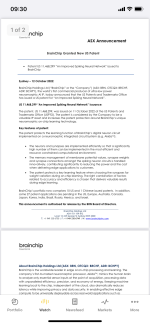Sirod69
bavarian girl ;-)
Bridging the digital divide with ultra low cost smartphones
Arm's Neil Fletcher explores the potential of ultra low cost smartphones to help bridge the digital divide in emerging economies.
......Technical capabilities and upgrades
So, how do these vital experiences translate in terms of technical capabilities and upgrades on ULC smartphones? At Arm, we believe there are five key areas.Firstly, good multi-touch screens with visibility in bright sunlight. This is most important for education where students are participating in classes, watching videos, and doing assignments directly on their devices. It is likely that a full HD 5.8’’ will be the ‘sweet spot’ for the ULC smartphone screen size.
Beyond size, however, pixel density, screen brightness, contrast and color accuracy, will contribute to the overall viewing experience. For resolution, for example, a target of about 300 ppi seems sensible, as this will provide an appropriate trade-off between the capability of the device, the cost of this feature and the power that it would consume.
Secondly, RAM will also need to increase from 1GB RAM to a minimum of 2GB RAM, coupled with a minimum of 32GB ROM for local storage of education materials, like documents and videos.
The battery is the next critical technical component, particularly because power supply is not always readily accessible. A move to increase the battery capacity from 3000mAh to 4000mAh would again be a potential sweet spot for people in terms of cost and a full day’s untethered experience with no need to charge.
Next, ULC smartphones need a good baseline security to enable and provide the trust for healthcare and financial services. Already the industry has adopted Trusted Execution Environments (TEEs) for biometric payments, Point of Sales (PoS) and digital identity use cases worldwide using Arm TrustZone technology that is inherent to every Arm CPU. In the future, these use cases may also be supported by software vulnerability reduction and security countermeasures, such as branch predictors and pointer authentication.
Finally, to deliver the performance needed for faster app launch speeds and UI fluidity, the processors that ULC smartphones adopt will need to be upgraded. This means moving away from the quad Arm “LITTLE” CPU configuration of low power Arm Cortex-A processors to an Arm “big.LITTLE” CPU configuration that combines lower power, more energy efficient processor cores (LITTLE) with more powerful and performant (big) processor cores. This helps support tasks and workloads with high-processing intensity, such as web browsing or video streaming.
....

Bridging the Digital Divide with Ultra Low-cost Smartphones
Thought leadership article explores the potential of ultra low-cost smartphones to help bridge the digital divide in emerging economies.


